So, while waiting for money for amp parts to materialize, and amp parts to arrive in the mail, for some indiscernible reason I wanted to find out more about what makes a vibrato circuit tick (ha-ha).
I started looking at and playing with the Wobbletron by Tim Escobedo and some of the vibrato circuits in the “Stompboxology” papers. The Wobbletron is fun, but supposedly also quite hard to make, so I wanted to put something similar together for myself while learning something new in the process.
Trying to convert the phase shift circuit to opamp I noticed how similar this was to the first stage of both the Phase 90 and the Micro Fazer. I ended up ripping off the first stage of the Phase 90.
As for the LFO I went through 7-8 different ones from various circuits (Tremulus Lune, Trembulator, Zombie Chorus, Ultra Flanger, Phase 90, Micro Fazer, Wobbletron etc.), but ended up with something very similar to the Zombie Chorus and Ultra Flanger that I liked the most.
I also tried different optocouplers in place of the FET, but they didn’t come close, so it’s the 2N5952 from the Phase 90 (which I had a bunch of). There’s a bonus in that since there’s only one stage you don’t have to match several of them. Other’s might work equally well, but I haven’t tried.
Finally, the depth pot. No idea where that came from. Seems to work well, but value subject to some experimentation.
I did breadboard this circuit and had zero noise issues, but haven’t tried the vero layout yet. I’m fairly confident it’ll be good, but you never know 😉
Let me know what you think! Next, tap-tempo LFO would be cool…
Update (08.11.2013): Now verified as working, thanks to Michael. Also, now that I’ve got the tap-tempo micro controller working I’ve modified this circuit to go with it. Stay tuned 🙂
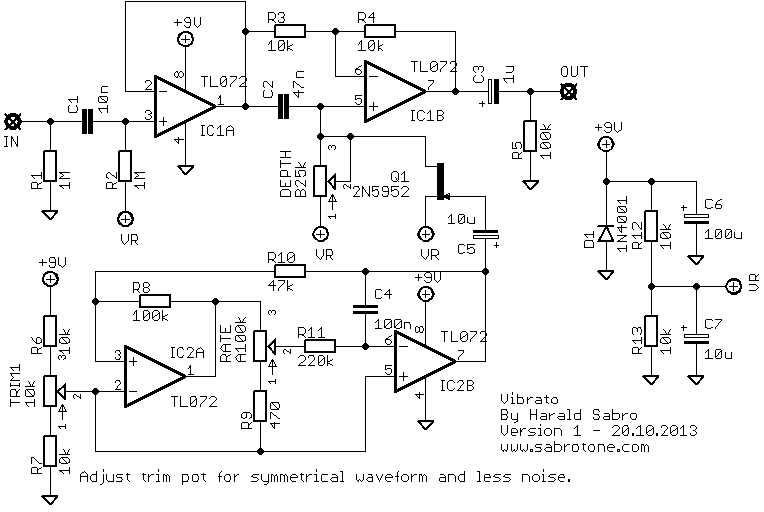
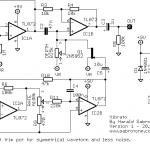
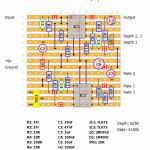
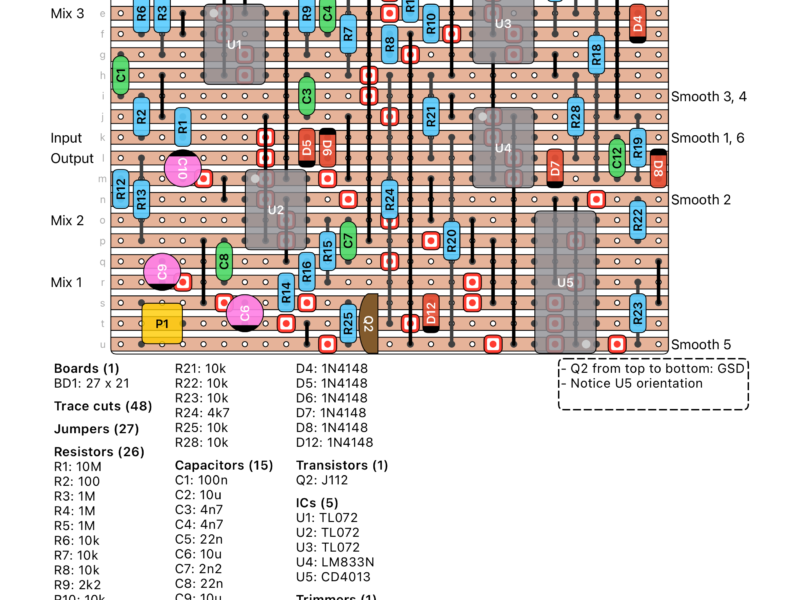
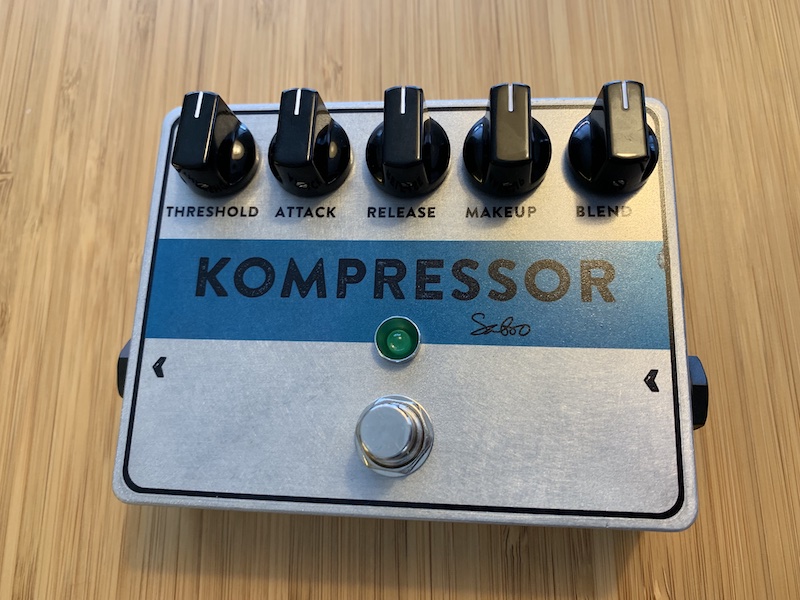
Idk if this design works with anything other than a 2N5952, which is unfortunately fairly obsolete in 2024. I tried a 2N5457 and a J112. Neither produces any vibrato, although could hear the LFO working. I think the LFO isn’t strong enough to close either the 2N5457 or J112.
Just for the hell of it I tried an n channel enhancement mosfet (bs170). This produced vibrato, although the LFO pulse came right through with it. Which was unusable.
does this sound like a real vibrato pedal similar to the malekko, vb-2, shaker, diamond or does it sound like a vibe pedal
Sounds cool, Luca. Care to share with the rest of us?
Luca,
Would you mind posting about how you swapped the fet to an ldr?
Or mods on how you smoothed the waveform out…
Thanks
Hi Harald, I made one but a few mods… ldr in place of the fet and a simplyfied tremulus lune lfo, waaaaay smoother modulation and zero thicking.
Alright, I’ll follow you on that one. Thanks 🙂
Harald, I wound up subbing in a 33nf input cap, although 22nf sounded pretty good for guitar, 33nf seemed to get me all my bass back (when using the vibrato with my P-bass).
That’s good to hear, Michael. And the input cap; no reason really. I haven’t tried it with a bass so if you recommend a larger value I’m all for it. I appreciate the feedback 🙂
Thanks for verifying, Michael 🙂
After playing with the trimpot some more I think I got it a little more smooth, very nice with the depth down about 50%.
I forgot to mention, the input cap seems a bit smallish, there is a considerable bass cut with some of my guitars/basses. Any reason you used 10nf? I plan to try some bigger values tonight when I get home.
I built it, layout works fine, call it verified.
I like it, it has a lot of depth, I wasn’t a big fan of the LFO waveshape at slower speeds, seemed to race from normal to pitched. Any way to make it more smooth?
That’s a fun idea 🙂
somethings else that would be cool is something like the pigtronix tremvelope. There the tremolo speeds up or down when you’re signal decreases.